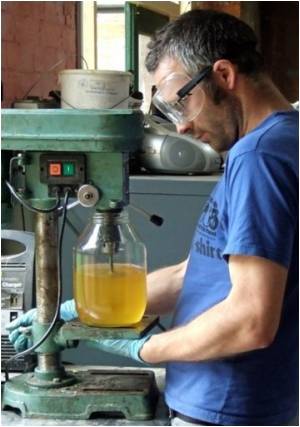
This adhesive system works best when loading; the application of the gecko's weight; occurs along the long-axis of the toe, and when this loading is along the natural curvature of the setae. But can geckos employ this adhesive system when moving downhill? If the setae are positioned so that loading might be against their natural curvature, would the gecko not slip as it moved downhill?
Biologists at the University of California, Riverside have now conducted experiments on geckos in the lab to find the answer. They found that when moving on steep downhill surfaces geckos reverse the position of their hind feet to potentially use the adhesive system as a brake and/or stabilizer, resulting in the digits of the hind feet facing backwards and the setae in the hind feet aligned along the natural curvature of the setae to counteract gravity. Specifically, on a 45 degree downhill slope, the geckos were found to rotate their hind limbs up to 70 degrees more posteriorly (toward the tail).
"This multi-functionality of the gecko adhesive system permits effective locomotion on both uphill and downhill slopes," said Timothy Higham, an assistant professor of biology, in whose lab the research was done. "Without this ability, geckos would be effective at going up, but they would not be able to descend as easily. Indeed, they could plummet downhill."
Source-Eurekalert








